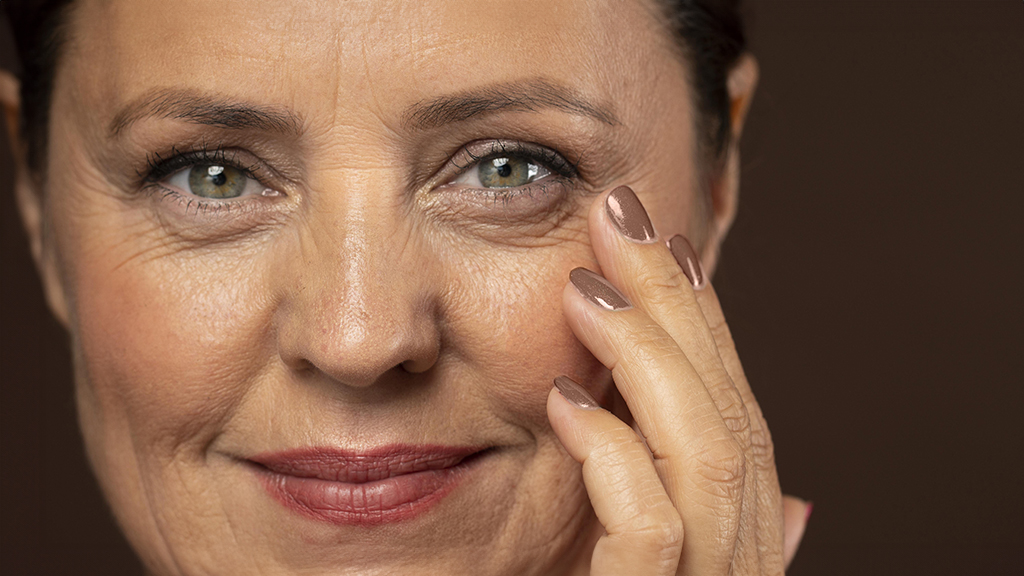What is Breast Reconstruction?
The purpose of Breast Reconstruction is to restore the original shape and appearance of breast(s) after complete or partial breast removal in cancer patients or to address problems stemming from any number of causes, including congenital breast deformities.
Breast reconstruction makes many patients feel better about their appearance, however it is important to be realistic about the expected outcome. A reconstructed breast may not look exactly like your original breast nor will the sensation be similar. Hence the decision to have a breast reconstructed is a very personal one and you should fully explore your options so as to make the best choice for your body and your life.
Our practice specializes in the most advanced techniques of breast reconstruction surgery and our team will provide you with the advice and guidance best suited to your specific needs. The treatment requires in-depth analysis as well as a fully personalised surgical plan for each individual case. We feel that the more informed you are about Breast Reconstruction upfront, the easier it will be for you to make an informed decision.
Types of Mastectomy
Mastectomy is surgical partial or complete removal of one or both breasts in individuals with breast cancer. In the past, complete removal of the breast was the standard treatment of breast cancer; however surgical breakthroughs over the past two decades have given individuals more options than ever before. At present, there are a number of different types of mastectomy in which different incisions are used. Whilst every type of mastectomy may not be right for every patient, the type of incision used and the amount of skin removed will affect the aesthetic results of reconstruction.
Factors affecting the type of mastectomy to be used are age and general health of the patient, size, location and behaviour of the tumour, whether or not the surgery is to prevent cancer instead of treating it (prophylactic), and whether or not the patient intends to undergo reconstructive surgery.
Here are the various types of mastectomy:
- Simple Mastectomy – also known as “Total mastectomy”, this is a procedure that removes the entire tissue of the affected breast including the skin, nipple and areola (the pigmented area surrounding the nipple). However it leaves the muscle under the breast intact.
- Modified Radical Mastectomy– this procedure combines removal of the entire breast tissue from the affected breast with the removal of the axillary (armpit) lymph nodes on the affected side of the body.
- Radical Mastectomy – also known as “Halsted Mastectomy”, this procedure involves removal of the entire breast tissue of the affected breast, the axillary lymph nodes and the pectoralis major and minor muscles behind the breast on the affected side of the body. Only the skin required to close the incision is left in place. It is considered the most disfiguring of the mastectomy procedures, leaving very little tissue other than skin over the rib bones. This procedure is not a common type of mastectomy and is only used when the cancer has spread to the pectoralis muscles or in recurrent breast cancer involving the chest wall.
- Skin Sparing Mastectomy – this procedure preserves most of the normal breast skin, and the affected breast tissue is removed through a conservative incision made around the areola. The nipple and areola are also removed for oncologic reasons as they are intimately associated with the underlying breast tissue.
- Nipple Sparing Mastectomy – also known as “Subcutaneous Mastectomy”, this is the most advanced technique available in mastectomy. In this procedure the breast tissue is removed while the nipple and areola are preserved. This is the most advanced and difficult mastectomy technique to perform as the surgeon must remove the ductal tissue directly behind the nipple, yet preserve sufficient blood supply to the skin and nipple and not leave any breast tissue behind. Nevertheless, this will provide patients with the best possible cosmetic results when combined with immediate breast reconstruction.
Prophylactic Mastectomy
Prophylactic Mastectomy – also known as “Preventive or Risk-reducing mastectomy”, Prophylactic mastectomy is a procedure to remove one or both breasts to reduce the risk of developing breast cancer in individuals who are at high risk of developing the disease.
Indications for having a prophylactic mastectomy are:
- Family history of breast cancer
- Personal history of breast cancer or having one breast affected with cancer
- Tested positive for BRCA1 or BRCA2 gene mutations (BRCA stand for Breast Cancer Susceptibility Gene. These are human genes that belong to a class of gene known as tumour suppressors. In normal cells, BRCA1 and BRCA2 help ensure the stability of the cell’s genetic material (DNA) and help prevent uncontrolled cell growth. Mutation of these genes has been linked to the development of hereditary breast and ovarian cancer.)
- Diagnosis of lobular carcinoma in situ (LCIS), which is a condition that increases the risk of developing breast cancer in either breast
- Having had radiation therapy to the chest before the age of 30
- Have widely spread breast microcalcifications or have dense breasts (both of these factors make physical breast examination and mammography more challenging.)
Making a decision about whether or not to undergo prophylactic mastectomy is personal and should be considered very carefully. As with all other surgical procedures, there are possible risks and complications associated with prophylactic mastectomy. Nevertheless, many patients find peace of mind in having preventive surgery because the risk of developing cancer is so great when a BRCA mutation is present. Patients who do not have a cancer diagnosis but carry a BRCA gene mutation can achieve a greater than 90% reduction in breast cancer risk by having prophylactic mastectomy.
Prophylactic mastectomy combined with immediate reconstruction, especially when skin sparing or nipple sparing mastectomy techniques are used with autologous tissue reconstruction, provide patients with the most realistic and natural-looking reconstructed breasts.
Timing of Reconstruction
Once you have decided to have a breast reconstruction procedure and have determined which type of reconstructive procedure will best meet your needs, one of the first choices you have to make is whether to undergo immediate or delayed reconstruction. Immediate breast reconstruction is performed during the same operation as the mastectomy, whereas delayed breast reconstruction involves only performing the mastectomy at the first operation and after the patient has fully recovered. Any additional necessary treatment having been completed, a second operation is performed to reconstruct the breast. This may be weeks, months or even years after the mastectomy.
Factors determining the suitability of immediate or delayed reconstruction are:
- Patient’s stage of breast cancer
- Patient’s medical condition
- Patient’s preference and lifestyle
- If additional therapies (such as radiation and chemotherapy) are needed to treat the breast cancer
The shape and size of the scars after a mastectomy will vary between immediate and delayed reconstruction. For immediate reconstruction, it is often possible to perform nipple or skin-sparing mastectomy which will result in either a circular scar around the nipple and areola or a relatively small straight line scar. However, for delayed reconstruction, more skin is removed at the time of mastectomy leaving a long scar across the chest wall. No loose skin should be left behind after mastectomy as it will shrink and scar to the muscle underneath which will harden and become non-malleable by the time of the reconstruction surgery. Using it for reconstruction would result in a very poor aesthetic result.
There are advantages and disadvantages associated with both options:
Immediate Reconstruction
Advantages
- Better aesthetic results
- Smaller breast scars
- Possibly fewer surgeries
- One anaesthetic and recovery period
- Decreased risk of emotional and social difficulties
Disadvantages
- Longer anaesthetic and recovery time
- Harder to detect mastectomy skin problems
- Increased risk of infection
- Distortion of reconstructed breast if radiotherapy is required
Delayed Reconstruction
Advantages
- Staggered surgery resulting in easier and shorter recovery after each procedure
- Patients have more time to consider breast reconstruction options
- Additional cancer therapy after mastectomy (such as radiation) does not cause problems at the reconstruction site
Disadvantages
- Longer breast scars
- Less optimal aesthetic results
- Requires additional surgery and recovery time
- Multiple hospitalisations
- Sometimes difficult to reconstruct after scarring occurs
Regardless of whether an immediate or delayed approach is used, it is important to understand that it may take several procedures to achieve the final aesthetic result that is desired.
Types of Breast Reconstruction
There are two main types of reconstruction: Implant Breast Reconstruction and Autologous Breast Reconstruction (natural tissue breast reconstruction). Implant breast reconstruction involves use of an artificial breast implant to recreate the breast mound whereas autologous breast reconstruction uses patient’s own tissue from another part of the body to recreate the breast.
There are two main types of flaps (a term used to describe a group of different types of tissue together with a blood supply keeping all of the tissue alive) used for Autologous Breast Reconstruction: Perforator flaps and Musculocutaneous flaps.
Perforator flap procedures are the most advanced methods of autologous reconstruction and require microsurgical expertise. In all perforator flaps, a free flap technique is used. This means that the flap consisting of skin, fatty tissue and tiny blood vessels that supply nutrients to the tissue is completely detached from the surrounding tissues at the donor site, transferred to the breast reconstruction site, and the blood vessels are then re-connected to vessels close to the breast using microsurgical techniques, making sure that the flap receives the blood supply needed to survive.
In Musculocutaneous flap procedures, flaps contain skin, fatty tissue as well as muscle from the donor site in order to carry the blood vessels that will nourish the tissue of the reconstruction. The main technique used in muscle flap procedures is the “pedicle flap” technique. This involves detaching the tissue including the muscle within the flap from the surrounding tissues but keeping the blood vessels attached to the body. The tissue can then be rotated around the blood vessels to the new position at the site of the reconstruction. The main advantage of this technique is that the blood supply is not disrupted so microsurgery is not necessary. The main disadvantage is that the tissue needs to stay attached to the body where the blood vessels enter the flap, and so only tissue relatively close to the breast can be used. Furthermore, the removal of muscle from the donor will result in disadvantages such as permanent muscle weakness at the donor site, more postoperative pain and longer recovery after surgery than following perforator flap procedures.
Suitability of the type of reconstruction will depend on:
- How much breast tissue has been removed during mastectomy
- How healthy is the breast tissue and the tissues on other areas of the body that may be used (donor sites)
- Whether the patient has had radiotherapy to the breast area or chest wall
- The shape and size of the breasts
- Patient’s preference
- Patient’s general health and body build
Our surgeons are highly experienced in the advanced microsurgical perforator flap procedures and will opt for this type of reconstruction whenever possible but in the rare event that your anatomy does not allow for a perforator flap procedure to be performed, you should consider the option of having a Musculocutaneous flap breast reconstruction surgery.
Autologous breast reconstructions typically produce reconstructed breasts with the most natural look and feel possible. Furthermore, a breast reconstructed from natural tissue is yours for life, as opposed to a reconstruction using synthetic implants, which often have to be replaced over time.
Here are advantages and disadvantages associated with both Methods:
Breast Implant Reconstruction
Advantages
- Short and relatively simple surgery
- Short anaesthetic and recovery time
- No operating on healthy tissue or extra scars elsewhere
- No missing tissue elsewhere in the body
Disadvantages
- Slow reconstructive process with expansion of implants
- Less symmetrical shape match with remaining natural breast
- Less natural breast texture
- Unsuitable for reconstructing large breasts
- Artificial material is more likely to become infected
Autologous Breast Reconstruction
Advantages
- Most natural feel
- Most durable
- Best aesthetic result
- No artificial materials
Disadvantages
- Major operation
- Extra scars
- Possible complications from surgery at other body sites
- Longer hospital stay
At the consultation, your surgeon will explain the different types of reconstruction for you and based on your anatomy, prior surgeries, current medical condition, cancer treatment needs and your personal preference, will provide you with a personalised treatment plan. Our surgeons will also work closely with your oncologist and radiologist to form a collaborative partnership designed to give you the best possible and compassionate care. It is important to understand that all reconstructive options have both risks and benefits, and each option usually requires multiple procedures to reach a final result.
To learn more about Breast implant reconstruction, and Autologous Breast Reconstruction using Muscle flap or Perforator flap procedures, visit the relevant pages by clicking on the procedure.
Radiation & Breast Reconstruction
Radiation acts directly on the cell nucleus. Cancer cells grow rapidly compared to normal cells, so by radiating the cancerous area, the cells are chemically damaged and changed, thereby preventing their growth. For some patients, radiation therapy may be required after their mastectomy. For patients who choose breast conserving surgery, have multiple positive lymph nodes, or have a local recurrence, radiation therapy will likely be part of the treatment plan. When radiation is used in treatment of breast cancer, it has a negative effect on surrounding normal cells. It especially damages the blood supply to normal skin at a microscopic level resulting in significantly greater risk of complications following surgery.
In Breast Implant Reconstruction radiation can cause breakdown of the wound at the incision site: extrusion in which the skin thins to the extent that the implant breaks through the skin and increases the risk of developing capsular contracture (a scar tissue beneath the implant causing the capsule to harden and contract).
Although in Autologous Breast Reconstruction, radiation can potentially create problems with the tissue used to form the new breast and cause shrinkage or hardening of the tissue, it is still a better option to be used when radiation therapy is part of the cancer treatment plan.
As well as affecting the type of reconstruction method used, radiation therapy also determines the timing of the reconstruction. We recommend that a patient having radiation therapy should wait approximately six months before undergoing breast reconstruction surgery. This will minimize the risk of complications and result in a more pleasing aesthetic outcome.
The need of radiation therapy will generally depend on the pathology information provided after evaluation of the mastectomy specimen. Hence, on occasion, a patient may already have begun the reconstructive process after mastectomy when it is learned that radiation therapy is required. If this occurs, appropriate measures will be taken to manage any complications that may arise from this and to optimize the final reconstruction.
While radiation therapy can complicate breast reconstruction surgery, with proper preparation most patients can achieve a satisfactory reconstruction even if radiation therapy is part of their treatment plan. Perforator flaps are all used routinely with excellent results to reconstruct patients who have required radiation therapy.
Risks & Complications of Breast Reconstruction
Although breast reconstruction surgery is commonly performed and generally safe, all patients must understand and accept that no surgical procedure is absolutely free from risk. For further information concerning the possible risks and complications associated with Breast Reconstruction, please refer to Risks and Complications associated with each type of breast reconstruction:
Alternatives to Breast Reconstruction Surgery
Breast Reconstruction makes many patients feel better about their appearance and benefit them emotionally and psychologically. However some patients may not be good candidates for reconstruction because of other health issues, or some patients simply do not want to put themselves through further surgery after a mastectomy.
In these cases there is an option of wearing an external prosthesis. These prostheses are usually made of a type of synthetic foam material that can be placed inside a custom bra to match the opposite breast; or these can be made for both breasts. When you wear normal fitting clothes, most people can’t tell the difference. However, the prosthesis can sometimes be uncomfortable to wear, particularly when it’s hot outside, or when you wear certain types of clothes.
For details about procedures and treatments or for a consultation, advice and prices from our Dubai clinic please call +971 4 431 2396 or use our online form.


